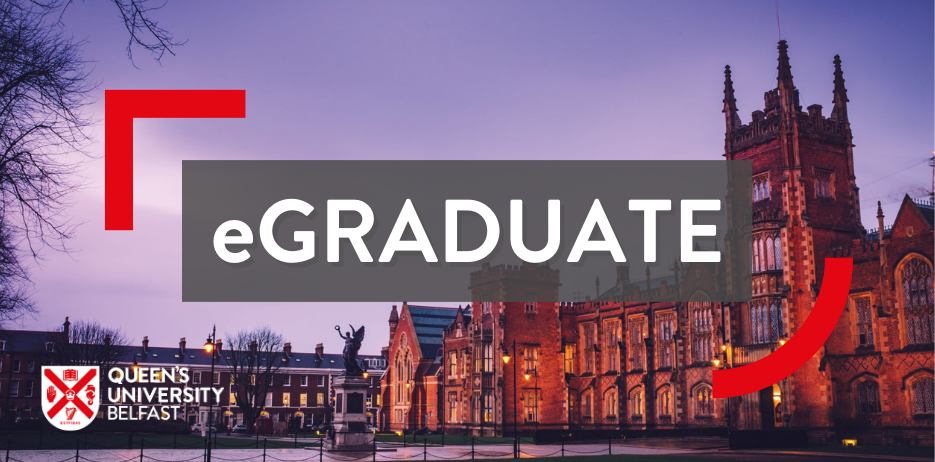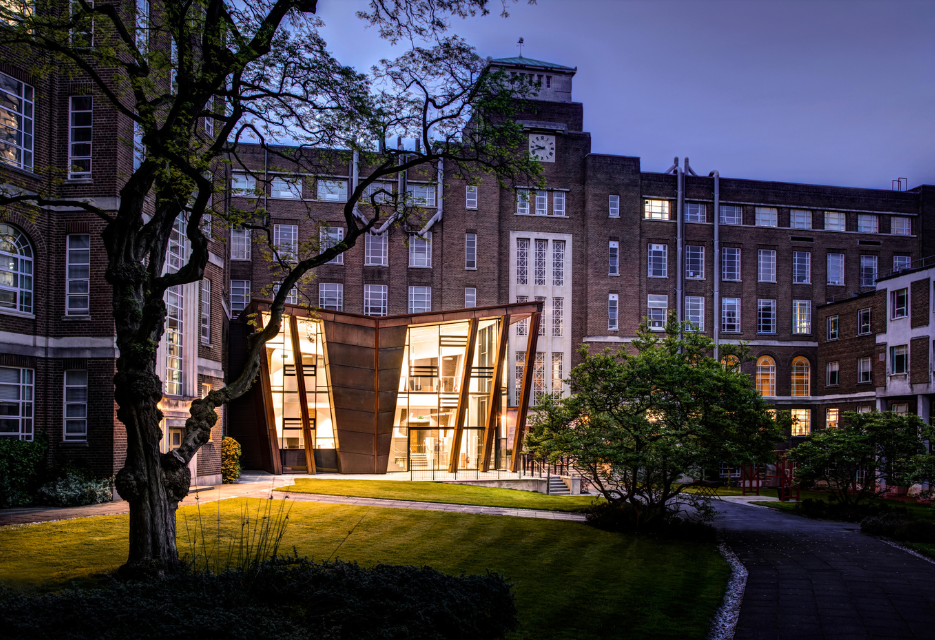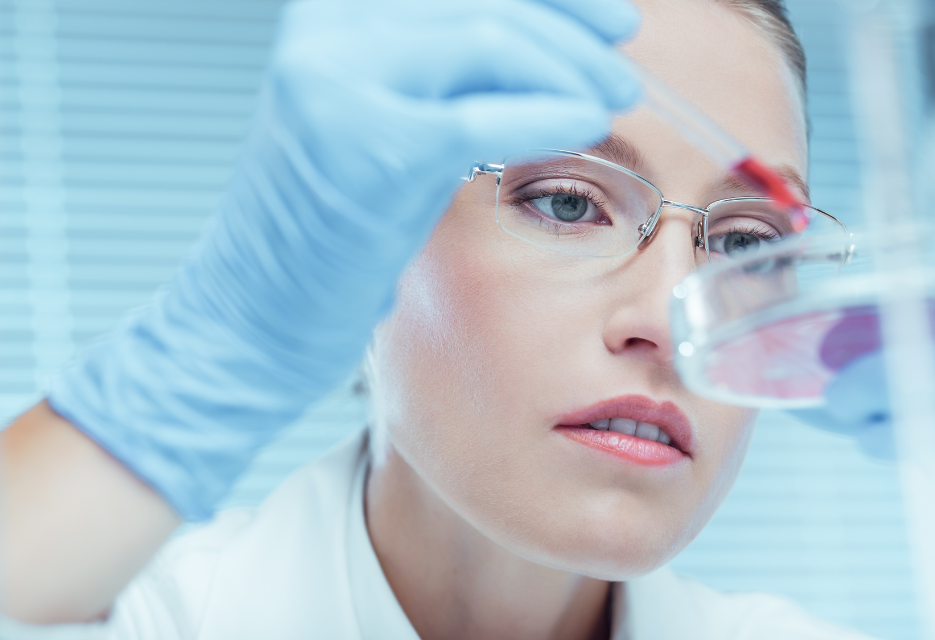
Better living through green chemistry
They’re making fossil fuels greener; recycling plastic into useful products; and enabling rare earth metals to be re-used for sustainable technology. They’re ionic liquids – and they’re revolutionising green tech, thanks to the QUILL Research Centre at Queen’s. Here’s how these liquids you’ve never heard of will bring better living through green chemistry.
It’s a paradox: sustainable technologies, from electric cars to wind turbines, need rare metals to work. But rare metals can only be extracted via 20th-century style mining and processing – with all the environmental devastation that entails.
What’s the alternative? Recycling is an obvious place to start. But separating out and removing rare metals from old batteries or magnets is a difficult and complex process, meaning that current recycling rates of these metals are low.
But there could be another way. At the QUILL Research Centre, the team has developed a new, environmentally benign way to separate these rare earth metals. How? By using the power of ionic liquid technology.
An ionic liquid is simply a salt in the liquid state. Unlike liquids such as water, which are mostly made of electrically neutral molecules, ionic liquids are mostly made of ions. They are conductive, have high boiling points and low freezing points, and aren’t flammable. That makes them perfect for a range of applications, such as batteries.
“By recycling these rare earth metals, we avoid some of the mining and therefore reduce the carbon footprint in the supply chain,” says Professor Peter Nockemann of the School of Chemistry and Chemical Engineering. But what if we didn’t need to use these metals in batteries at all? That’s what Dr Stephen Glover, Lecturer at the School of Mechanical and Aerospace Engineering, and his team are working on with a new kind of battery – the redox flow.
While traditional lithium-ion batteries have a shelf-life of just five to seven years and rely on metals such as lithium, corbite and nickel, redox flow batteries have a lifetime of 20 to 25 years. They can also store large amounts of energy – crucial as we transition to more intermittent renewables. (Around 30 per cent of NI’s wind energy is lost because it can’t be stored.)
Currently, these batteries use a rare metal called vanadium, which is expensive and will eventually run out. So, Glover’s team is working on an alternative that uses plentiful and cheap iron instead. It’s just another example of how QUILL brings together expertise across sectors from mechanical engineering to chemistry – and Glover says that collaborating on projects like this is invaluable. “It allows us to use our resources at Queen’s far better than if we worked individually.”

Want to tackle plastic waste? You can bury it. You can dump it. You can burn it (pyrolysis) – but the result will be to convert it into a fossil fuel. Faced with these far-from-ideal alternatives, Professor Gosia Swadźba-Kwaśny and Professor John Holbrey reckon they can do better.
The world produces around 400 million tonnes of plastic waste every year. But, unlike wood or paper, recycling plastic doesn’t result in fresh plastic that can be used again. Which is why Professor Gosia Swadźba-Kwaśny, at the School of Chemistry and Chemical Engineering, and her team are focused on converting plastic waste into something useful and environmentally sound.
Using ionic liquid technology, they have converted waste plastics into base oils for lubricants used in the renewable energy industry, on wind turbines or in electric vehicles, for example. They have also created a process that can convert waste products into sustainable solvents and surfactants for use in household products, such as washing-up liquid. “This brings us a model that is both sustainable and also economically viable,” says Swadźba-Kwaśny.
Researchers are also looking at ways in which the recycling process itself could be more environmentally friendly and less expensive. Professor John Holbrey’s lab at the School of Chemistry and Chemical Engineering is investigating how ionic liquids could be used as catalysts to break down plastics.
“Our initial results in this area have been pretty positive,” says Holbrey. “We’ve seen catalysts that have been more effective than conventional materials at lower temperatures. That means more efficiency and possibly more energy saving. Now we’re looking at how to translate this, using more difficult-to-recycle polymers.”
Both these projects could make a huge difference in how we recycle plastic waste – and leave a better planet for our children.
Learn more about using ionic liquids to recycle plastic waste.

Even in the best-case net zero scenarios, the world will still need fossil fuels in the short term. So how do we make those fuels as clean as possible? Experts at QUILL have produced a game-changing technology – making fuel production cleaner for the future.
Alkylate gasoline is the cleanest and most efficient fossil fuel. But there’s a problem: hydrofluoric acid (HF) is needed to make it. And HF is an extremely corrosive and poisonous volatile liquid. It’s an expensive and complicated business to use it safely.
There had to be a better way. Researchers, led first by pioneering green chemist Professor Kenneth Seddon – who sadly passed away in 2018 – and later by Professor Gosia Swadźba-Kwaśny, found it. They provided long-term research expertise to Chevron, the second largest oil company in America, to support the development of ISOALKYTM technology, which uses a non-volatile ionic liquid as a catalyst. This new process makes the refinery far safer, and also reduces caustic solution waste – as well as producing high-quality fuel.
In December 2017, the technology was awarded the Platts Global Energy Award for Breakthrough Solution of the Year. Judges welcomed it as a “game changer” that “solves a big environmental issue for refiners and offers significant market opportunities”.
And now it’s having an impact throughout industry. In a milestone for the industrialisation of ionic liquids, Chevron announced in 2021 it had started up an alkylation unit at its Salt Lake City refinery that uses an ionic liquid catalyst, instead of the traditional hydrofluoric or sulphuric acid.
This is the first successful new technology in alkylate gasoline production in 75 years –and it’s expected to significantly impact the global production of clean fuels for decades to come.
Discover more about making fuel production cleaner and safer with ionic liquids.

Up to 11 tons of mercury are emitted in oil and gas processing plants every year – and this highly toxic element is a big threat to our ecosystem and our health. Now, QUILL’s crack team are helping to clean it up.
Right now, the world still needs to extract gas. Mercury is ever-present in the process – and must be removed quickly and efficiently, on an industrial scale. Current methods, however, are both expensive and inefficient.
So, PETRONAS, the national oil and gas company of Malaysia, partnered with QUILL to find new solutions to this hugely complex problem. Researchers at Queen’s led a team that developed an entirely new ionic liquid-based approach to remove mercury contaminants from natural gas – HycaPure™.
In partnership with PETRONAS, the technology was scaled-up and validated at pilot scale. In 2012, the first commercial scale pilot HycaPure™ system was launched, and by 2017, 13 full industrial HycaPure™ systems had been installed in PETRONAS processing plants, constituting a huge processing capacity.
But the innovation doesn’t stop there. Researchers are now building on their experience of developing this technology to explore how new challenges in gas processing could be addressed.
And looking to the future, ongoing research links between QUILL and PETRONAS have provided a mechanism for the company to begin to move the focus of their research away from traditional oil and gas. They have now started a joint £2.4m programme on innovative low carbon technologies.
Learn more about the success of mercury capture to drive change in the petroleum industry.
Find out more about how our research shapes worlds.
Top of Page